SPECworkstation 3.0.2 Storage Benchmark
SPECworkstation benchmark is an excellent benchmark to test systems using workstation-type workloads. In this test, we only ran the Storage component, which is fifteen separate tests.
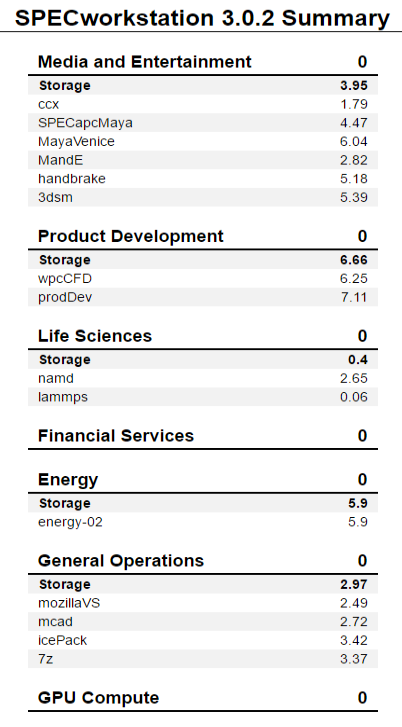
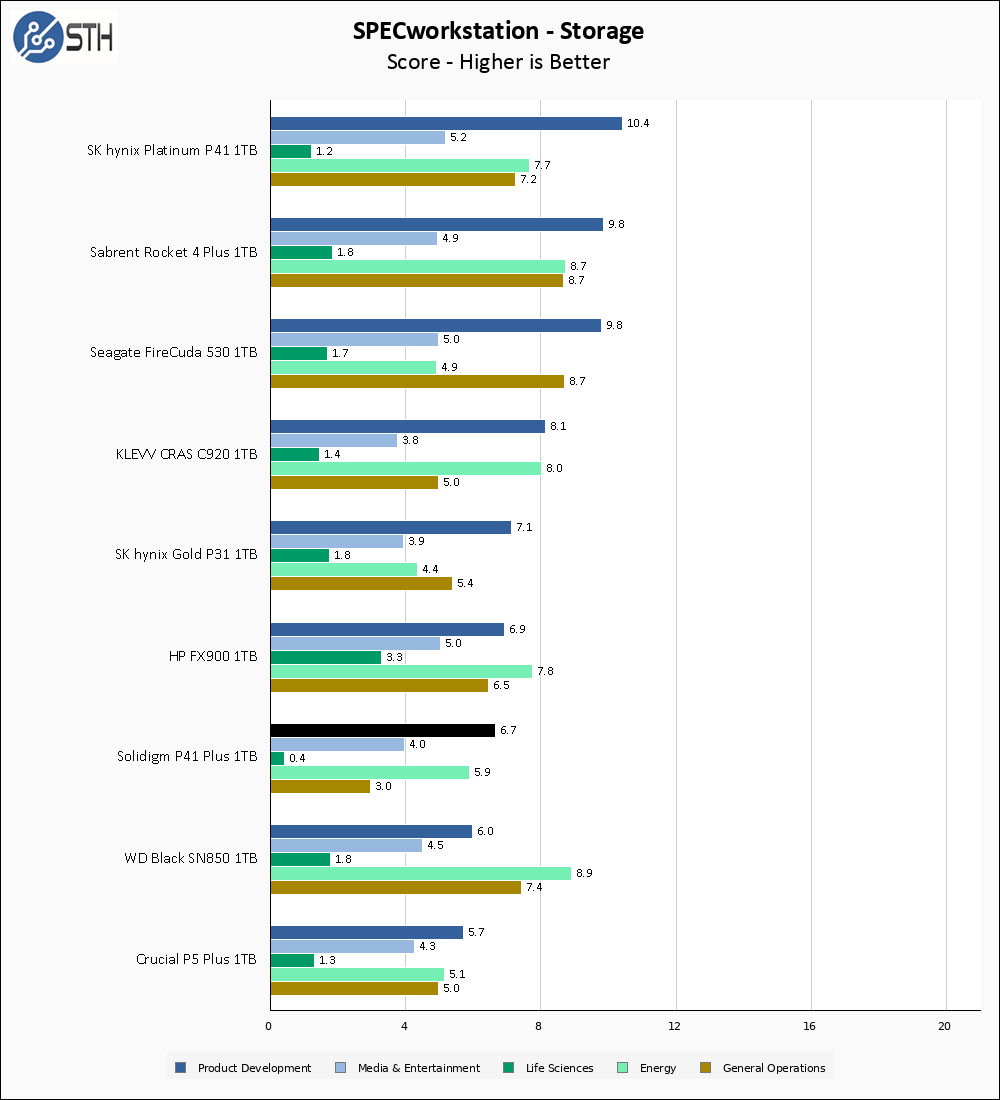
The best that can be said for the SPECworkstation results on the Solidigm P41 Plus is that they are not terrible. There is a particularly low score in life sciences, but the other sub-test scores are at least on the same map as some competitor drives.
Sustained Write Performance
This is not necessarily a benchmark so much as trying to catch the post-cache write speed of the drive. While I am filling the drive with data to the 85% mark with ten simultaneous write threads, I monitor the drive for the write performance to dip to the lowest steady point and grab a screenshot.
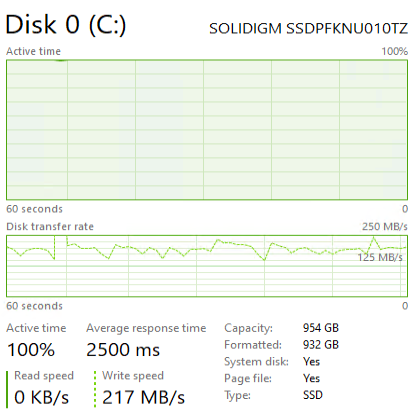
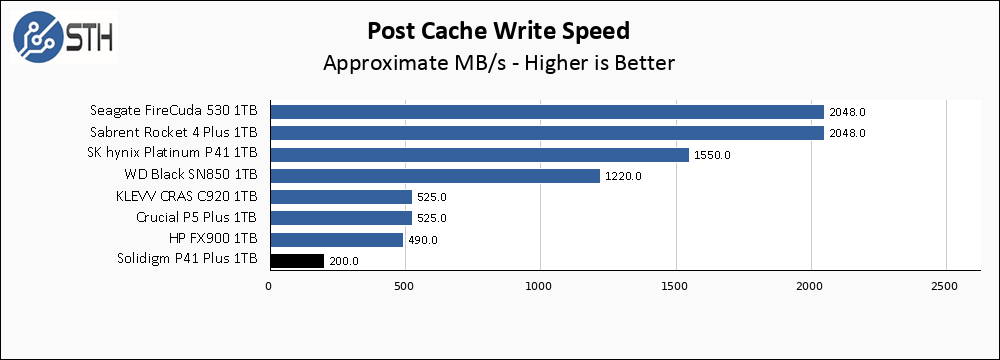
The post-cache write speed on the P41 Plus comes in at 200 MB/s. Thanks to the other drives on this chart that looks pretty terrible. In reality, 200 MB/s is not good, but there are much worse results in my testing database.
Temperatures
We monitored the idle and maximum temperature during testing with HWMonitor to get some idea of the thermal performance and requirements of the drive. Please keep in mind that our test bench is an open frame chassis in a 22C room, but with no direct airflow. As a result, this is not representative of a cramped low airflow case and is instead intended to model temperatures of a drive ‘on its own’.

Temperatures were fully under control, with peak results coming in at 66C. There are applications where having a cooler running drive is more important than all out SSD speed. This is especially true in many fan-less systems. There the P41 Plus does well.
Final Words
The Solidigm P41 Plus 1TB drive is currently $72 on Amazon. $72 is very inexpensive; the HP FX900 1TB is the next-slowest SSD included in my comparison today, and it is $90, while drives like the Crucial P5 Plus are $130. So while the P41 Plus definitely has some performance challenges, especially write speed when partially full, it does at least have a very low price, coming in below many PCIe Gen 3 drives.
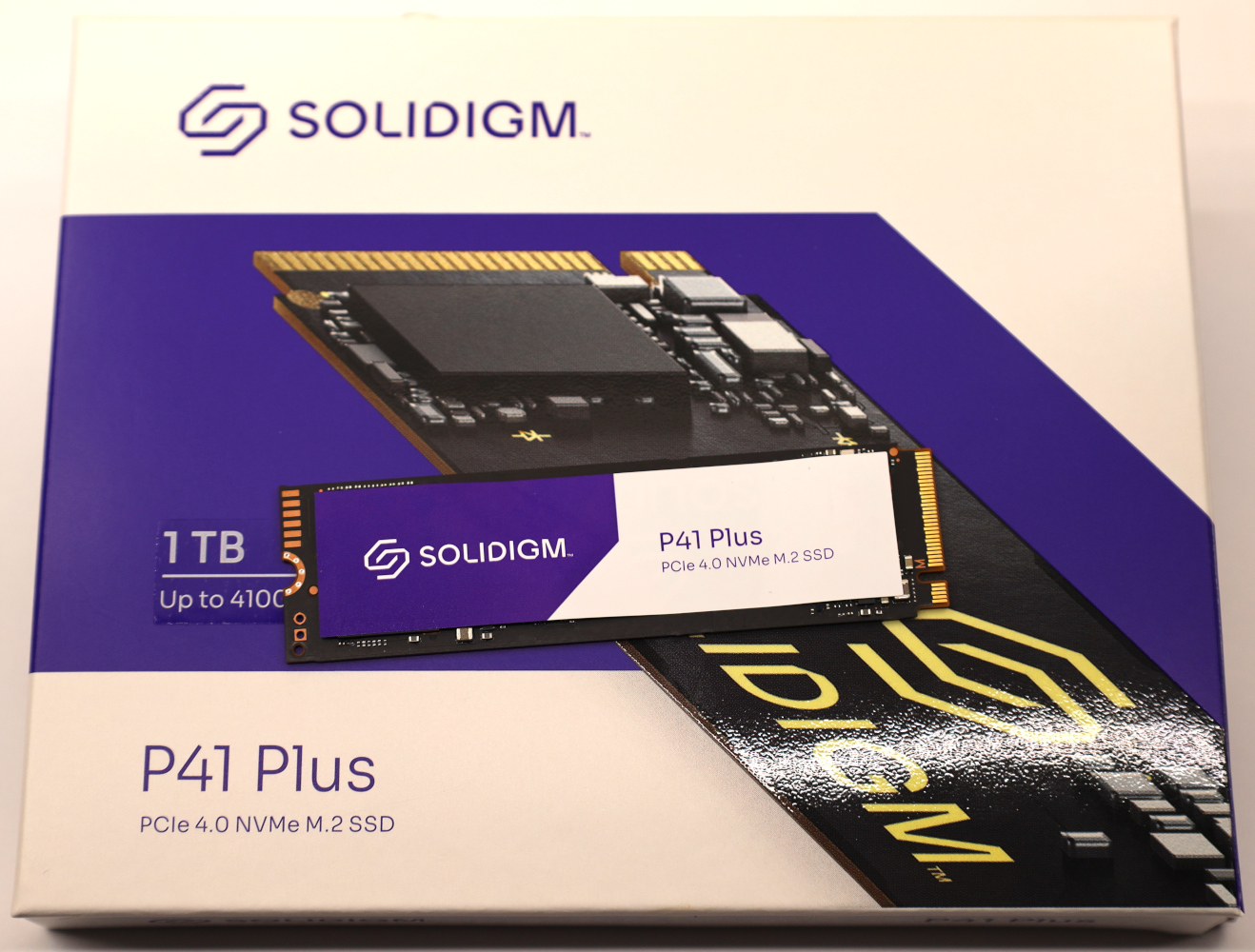
With the Solidigm P41 Plus, I feel like you are getting a few things. First, you are getting a Gen 4 drive with generally competent read speeds. Second, you get a drive with a 5-year warranty from a major manufacturer rather than some no-name vendor. Last, you are getting a 1TB drive at a very low price point. Would I purchase and install this drive in any of my personal systems? Probably not. Would it likely be OK in the average home or office PC? Probably so. If the P41 Plus were $100 this would be an instant fail from me but at $72 my entire perspective shifts to the value argument. If your use case is light duty only, and you are on a tight budget, then the P41 Plus can be considered; anyone else should look elsewhere.




I say this would be a good drive for a PS5 and it should be marketed as so, basic home/office pc use does not neccessitate a Gen4 NVME drive
The one place I could see Gen4 coming in handy with drives like is when you only have 2 PCIe gen 4 lanes. It’s only a matter of time before we see budget devices with m2 slots with only 2 PCIe Gen4 lanes. This is already common practice with Gen 3 m2 slots when PCIe lanes are scarce.
Did you test using the driver for better performance? They say that the driver allows the cache to work more efficiently, another review I saw that did test with the driver got 250-300MB/s when partially full, which is obviously still not great but is better.
Imo this drive is great for a games drive, 200MB/s is still way higher than most people’s internet (gigabit = 125MB/s) so for downloads and reading there wouldn’t be any issues.
The price is what makes it a great games drive, I just picked up a 2TB drive for $110 a few weeks ago and most 1TB drives were around $80, and I sure as hell will never use anywhere close to its rated write speeds and 200MB/s is more than quadruple what my internet speed is.
A lot of people get caught up on the numbers when any non-professional workload wouldn’t see any difference between this drive and a good SATA SSD, and I hope it drops even further in price to show what QLC can really be good for.
This review was published in Nov 2022 and you called $72 “very cheap”. Meanwhile, SSD prices are continuing their skydiving journey. Just a few days ago, the PCIe Gen 4 Kingston NV2 1TB drive was on sale for only $53 on Amazon and Newegg. That is 25% cheaper for the same capacity. Gen 3 drives like PNY CS1030 1TB are also dropping to $50~$55. But Solidigm P41 Plus is still standing at above $70. This makes the Solidigm P41 Plus a bad value.
I think it is really best to only consider the general competition bracket based on features (DRAM vs HMB, QLC vs TLC), but not to take value into consideration when making conclusions, because pricing changes too much to be a lasting metric. The value proposition should be left to the read to decide at the time of purchase.